Trumpet City
Trumpet City is a 60 minute live-installation of 18 or more trumpets performing outdoors in a public space.
Sunday, October 6, 3:00 pm 2019 | The Seventh realization took place on the Avenue de la République in Aubervilliers. Part of the Festival d'Automne. presented by Les Laboratoires d’Aubervilliers. Preview here.
Sunday, June 21st, 7:00 pm, 2015 | The Sixth realization took place on the Green at Dartmouth College, 1 E Wheelock Street, Hanover, NH 03755 | 40 trumpets from the Chosen Vale International Trumpet Seminar. Directed by Edward Carroll. Review from Vermont Public Radio is here.
Friday, October 24th, 5:00 pm, 2014 | The Fifth realization took place in the Cascade neighborhood of Seattle. 18 trumpets formed a ring around the empty lot of the Denny Substation. Presented by ALL RISE Seattle. Supported by Seattle City Light and the Seattle Office of Arts & Culture. Seattle Times feature is here.
"It sounds like hugs and kisses." -- Leon Meicht, 4 years old
"The effect was thrilling." -- Mary Sue Donsky
Matt Lavelle writes about his experience performing here.
Read the feature on booyorkcity.
"Trumpet City is more than a beautiful (musical) experience, it is a gathering, an articulation of urban space by its inhabitants. being a collection of individual calls it turns into one collective call: for peace, for attentiveness, for joy, for affirmation of life." -- Antoine Beuger
Saturday, September 20, 2014 | The fourth realization took place along Meeker Ave from Metropolitan Ave to Graham Avenue in Williamsburg and Greenpoint, Brooklyn (L, G to Metropolitan / Lorimer Streets). In cooperation with Our Lady of Mount Carmel - Williamsburg. Trumpet City: Brooklyn is sponsored, in part, by the Greater New York Arts Development Fund of the New York City Department of Cultural Affairs, administered by Brooklyn Arts Council (BAC). Preview of the September 20th installation by Allison Meier at Hyperallergic is here. Interview with Thomas Deneuville which appeared in I CARE IF YOU LISTEN:
The third realization took place Saturday, August 2, 11:30am-12:30pm | Part of the NYC Department of Transportation's Summer Streets Program | 92 trumpets lined Park Avenue from 46th Street at the Helmsley Building to 72nd Street. Performers include Aaron Meicht, Steph Richards, Andy Kozar, Eric Biondo, Lawrence Malin, and members of SEM Ensemble, Five Borough Brass, and Affinity Brass. Supported by Christ Church.
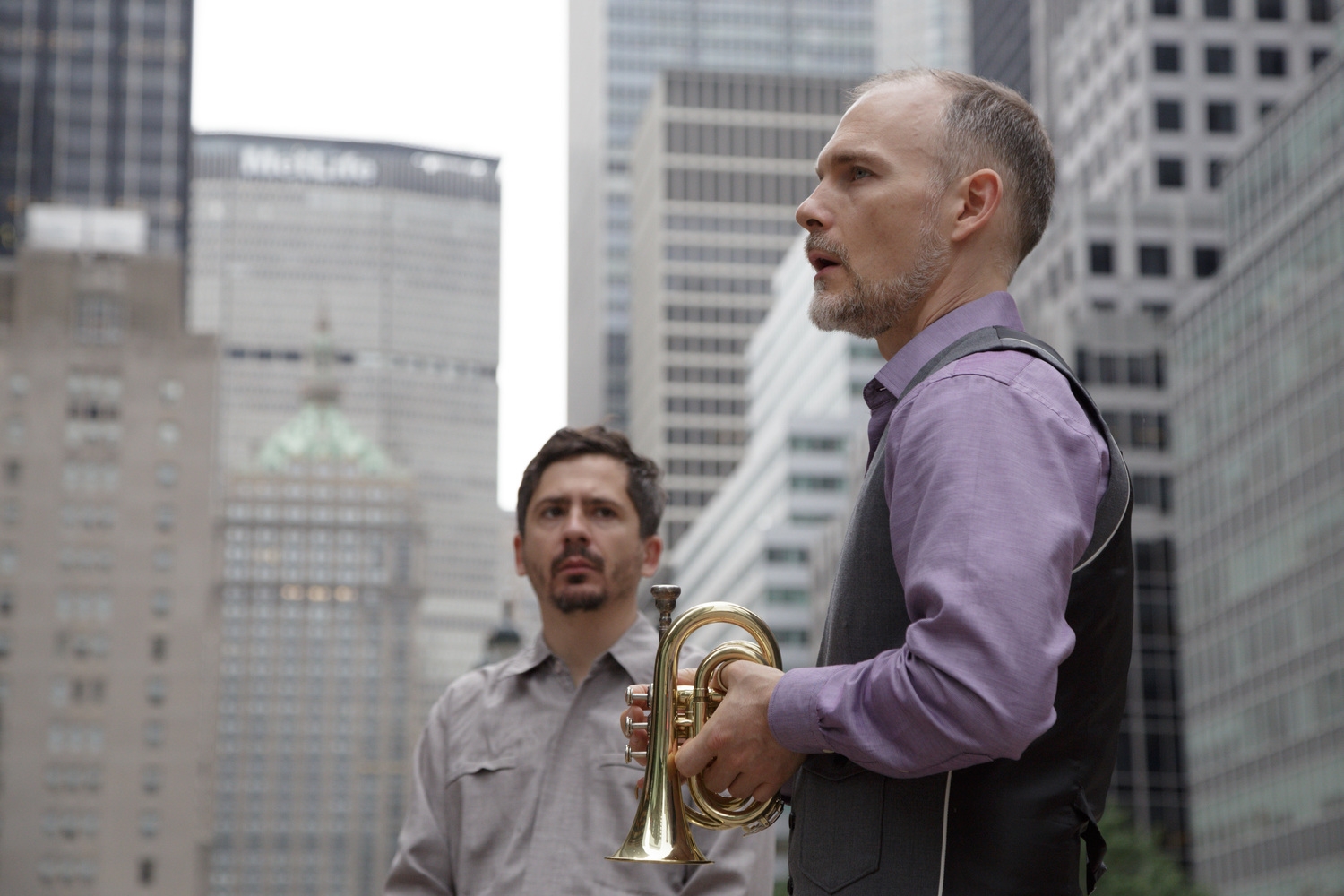
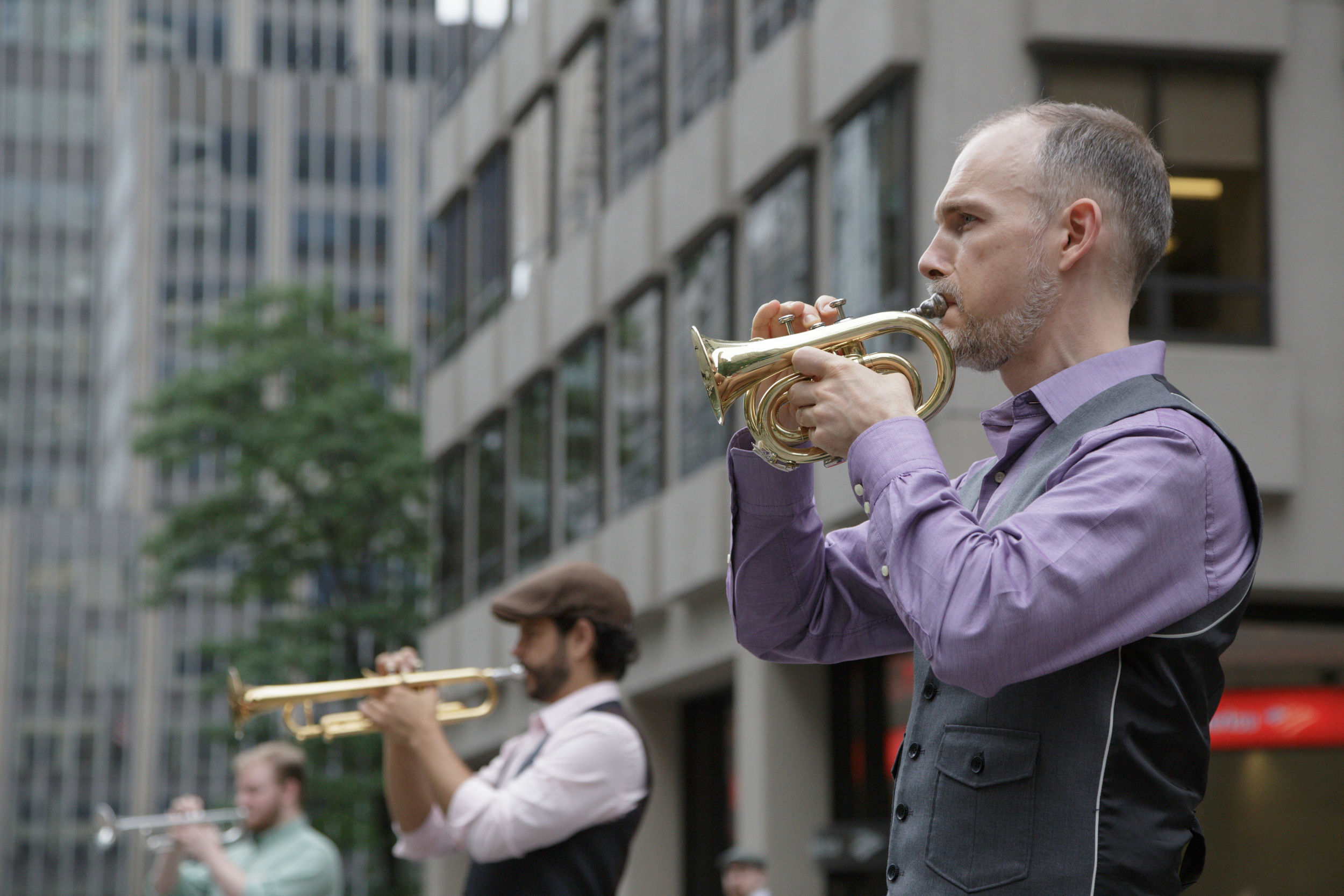

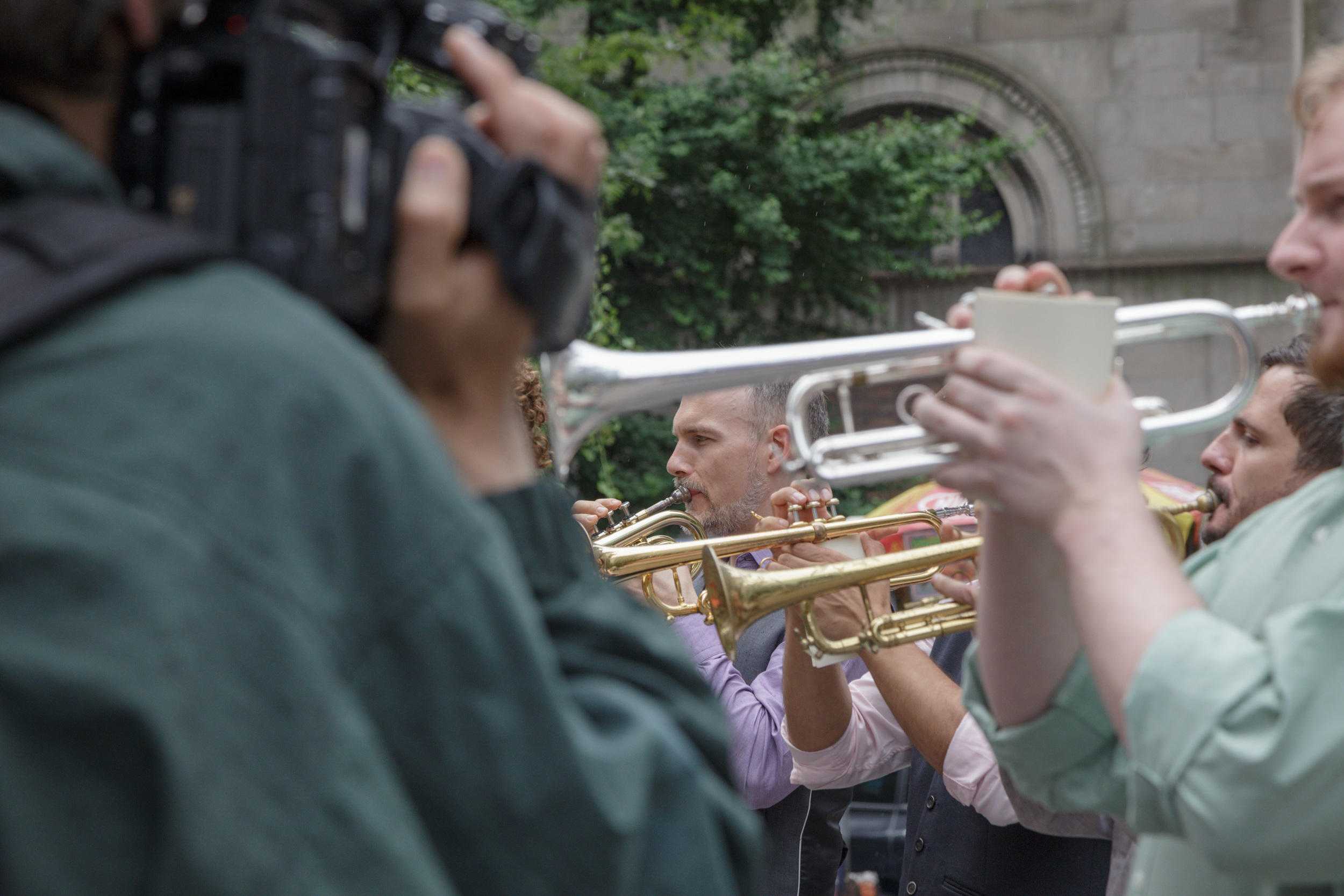

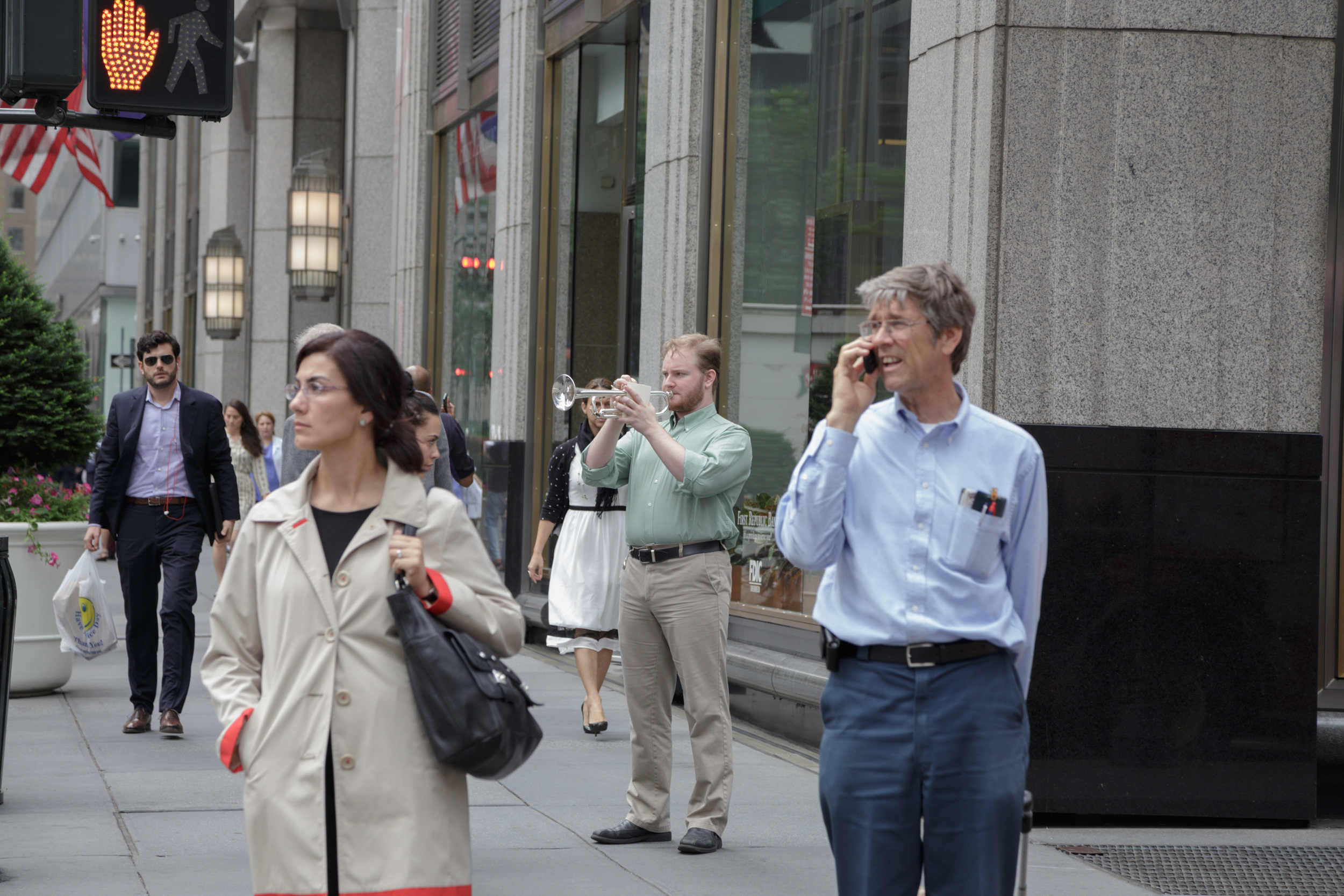


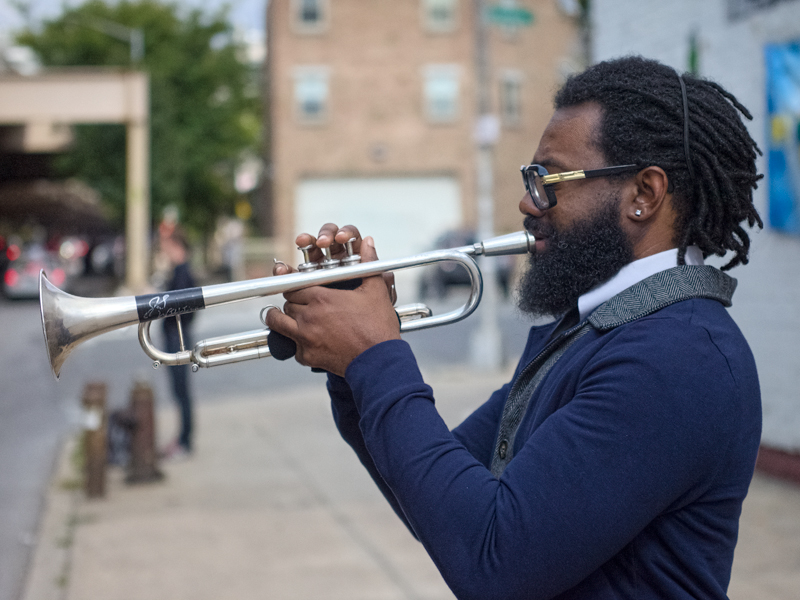
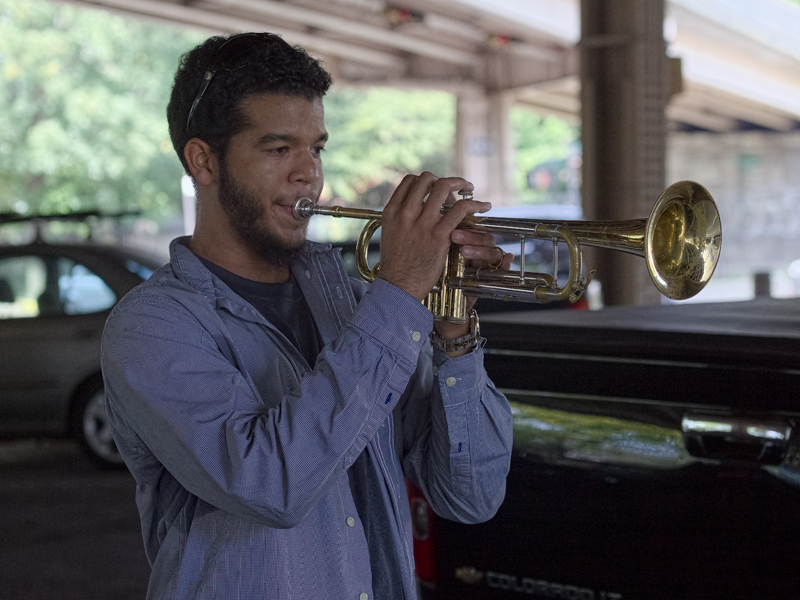
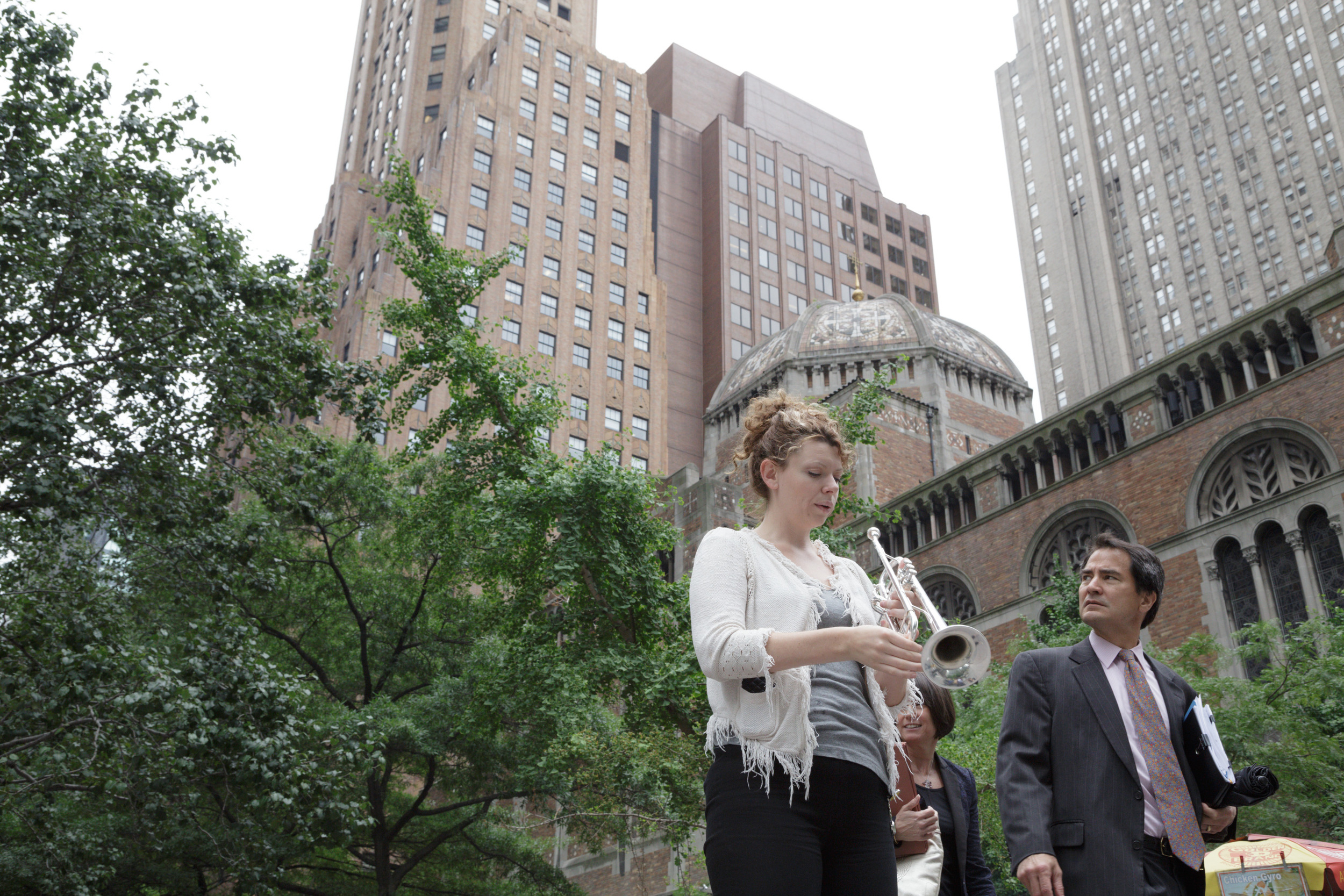


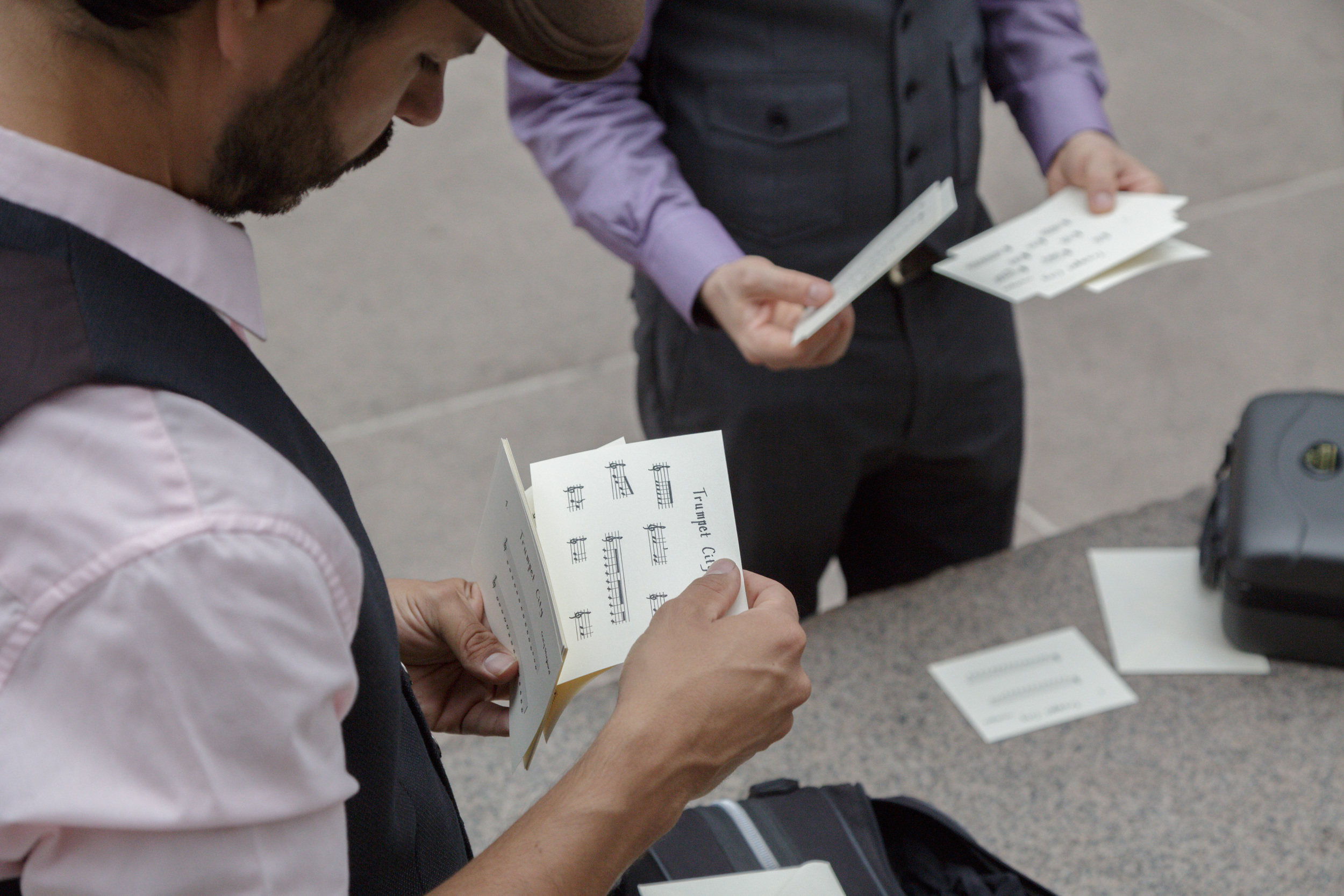

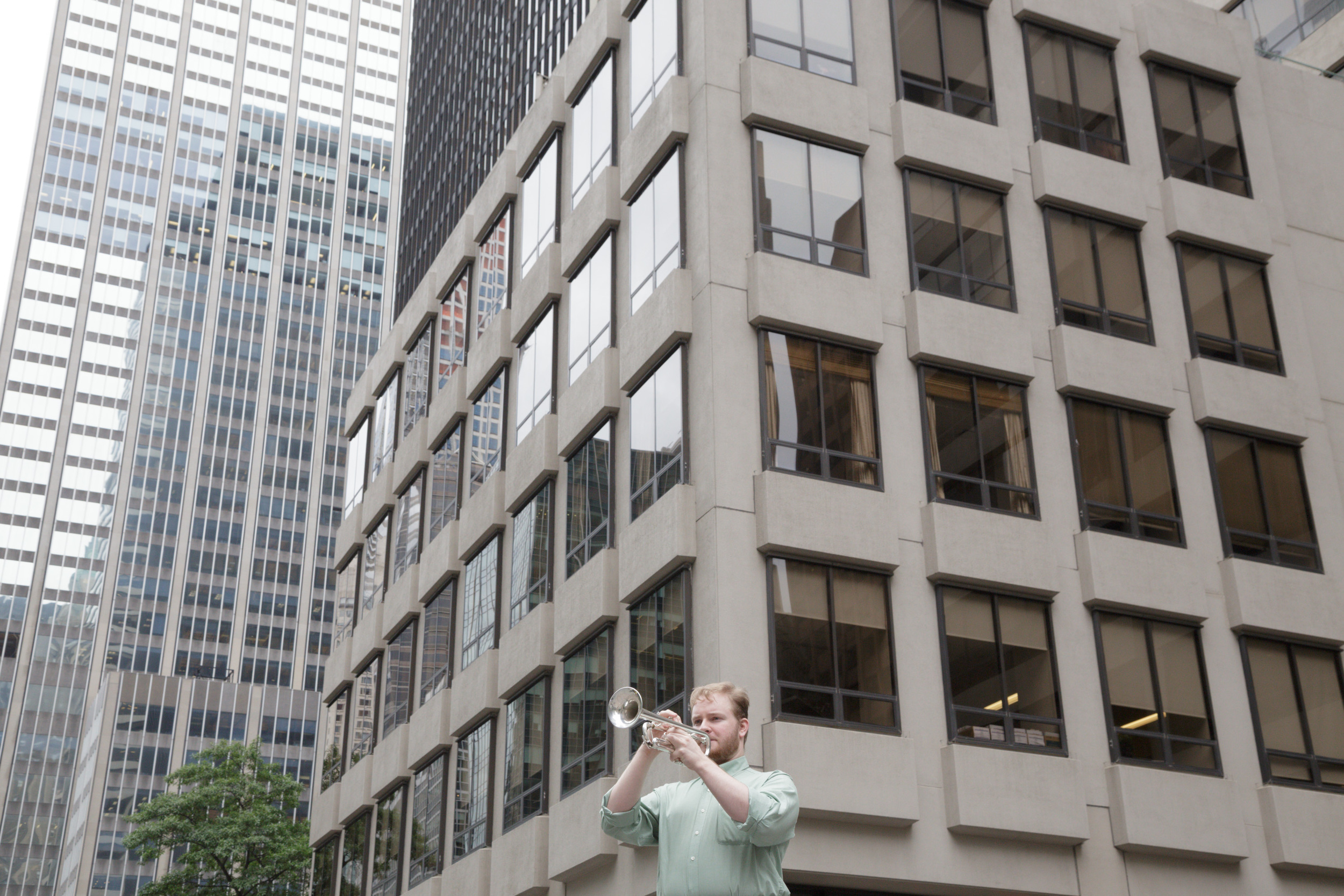
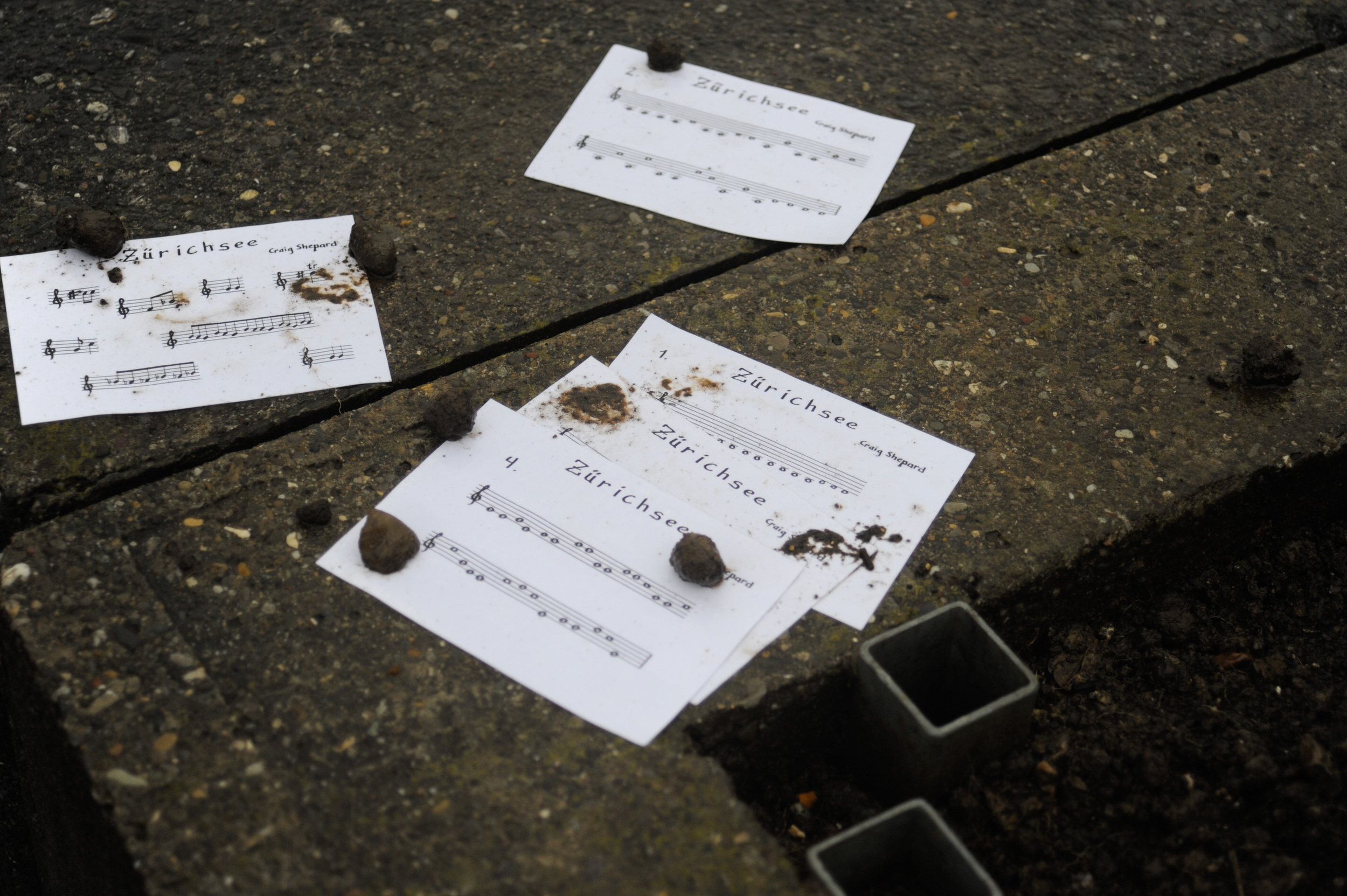
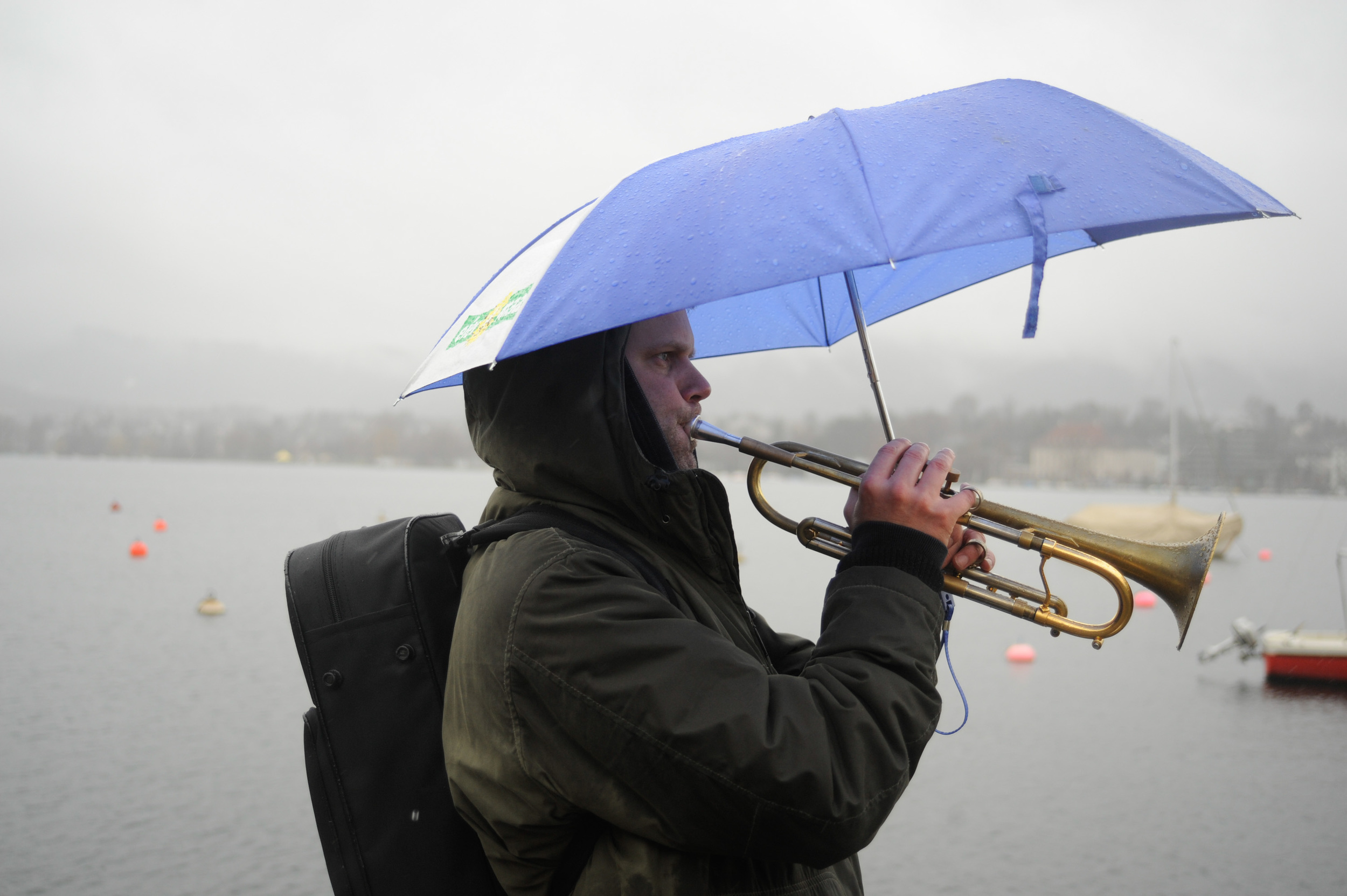
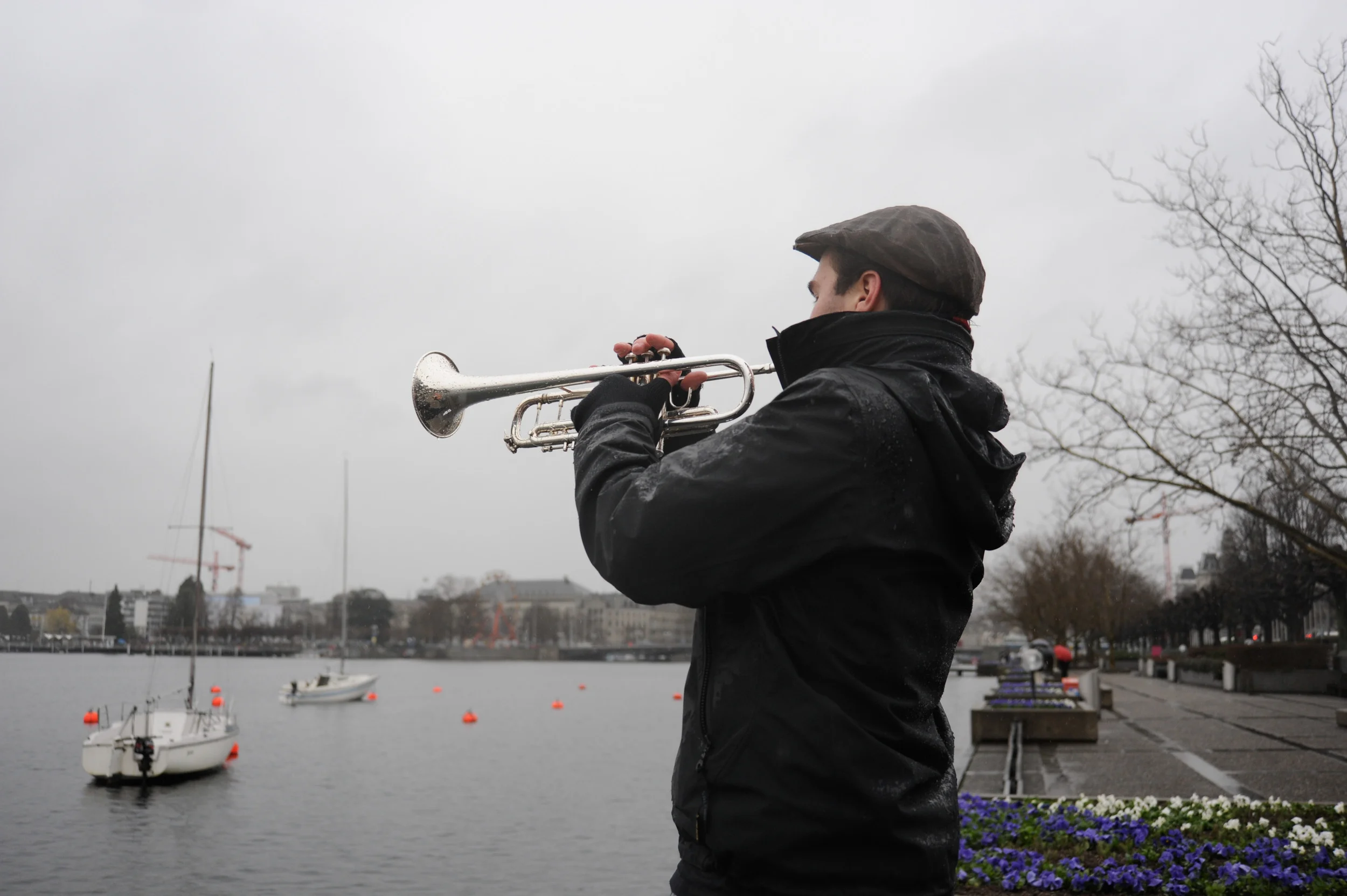


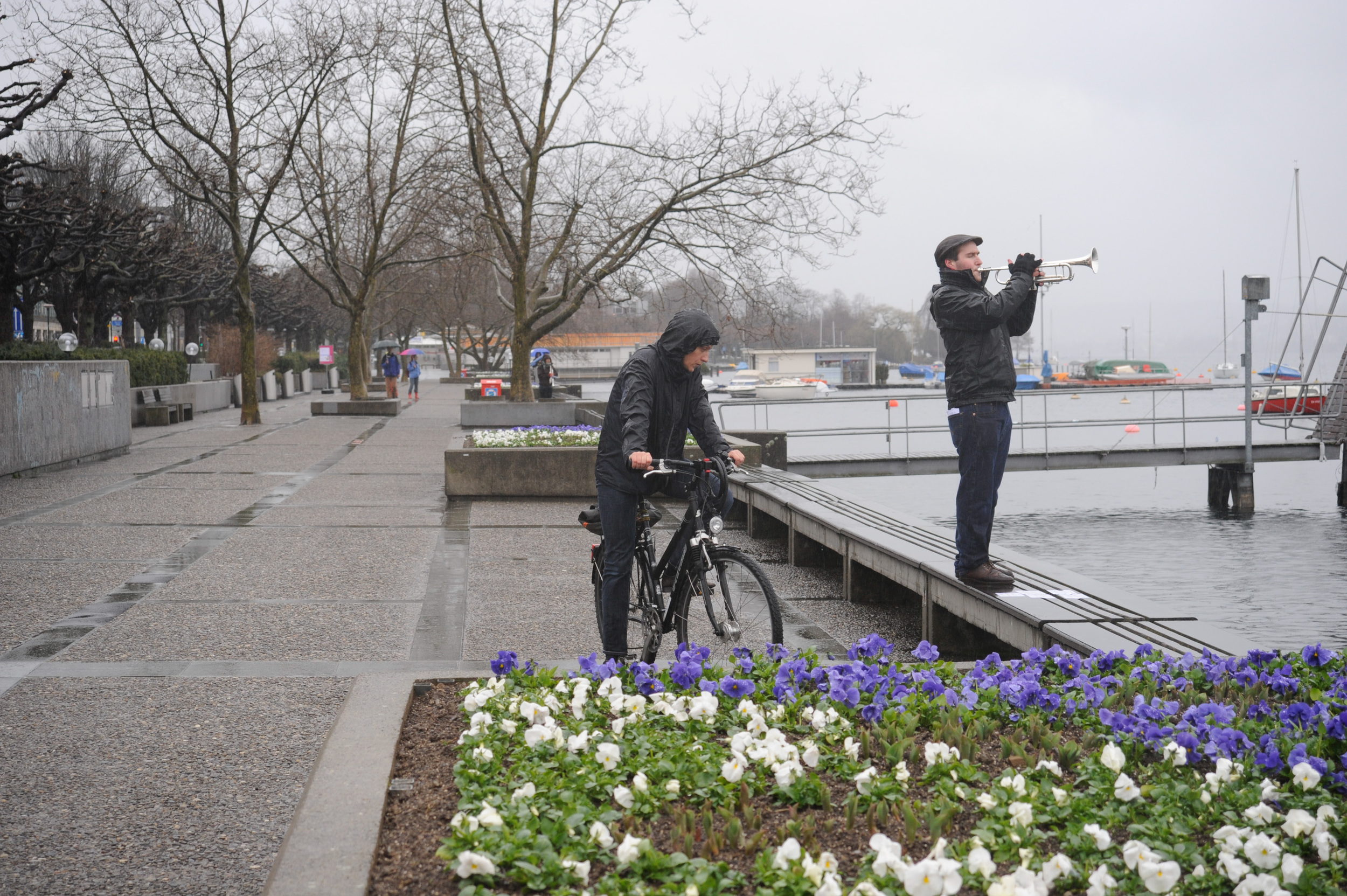
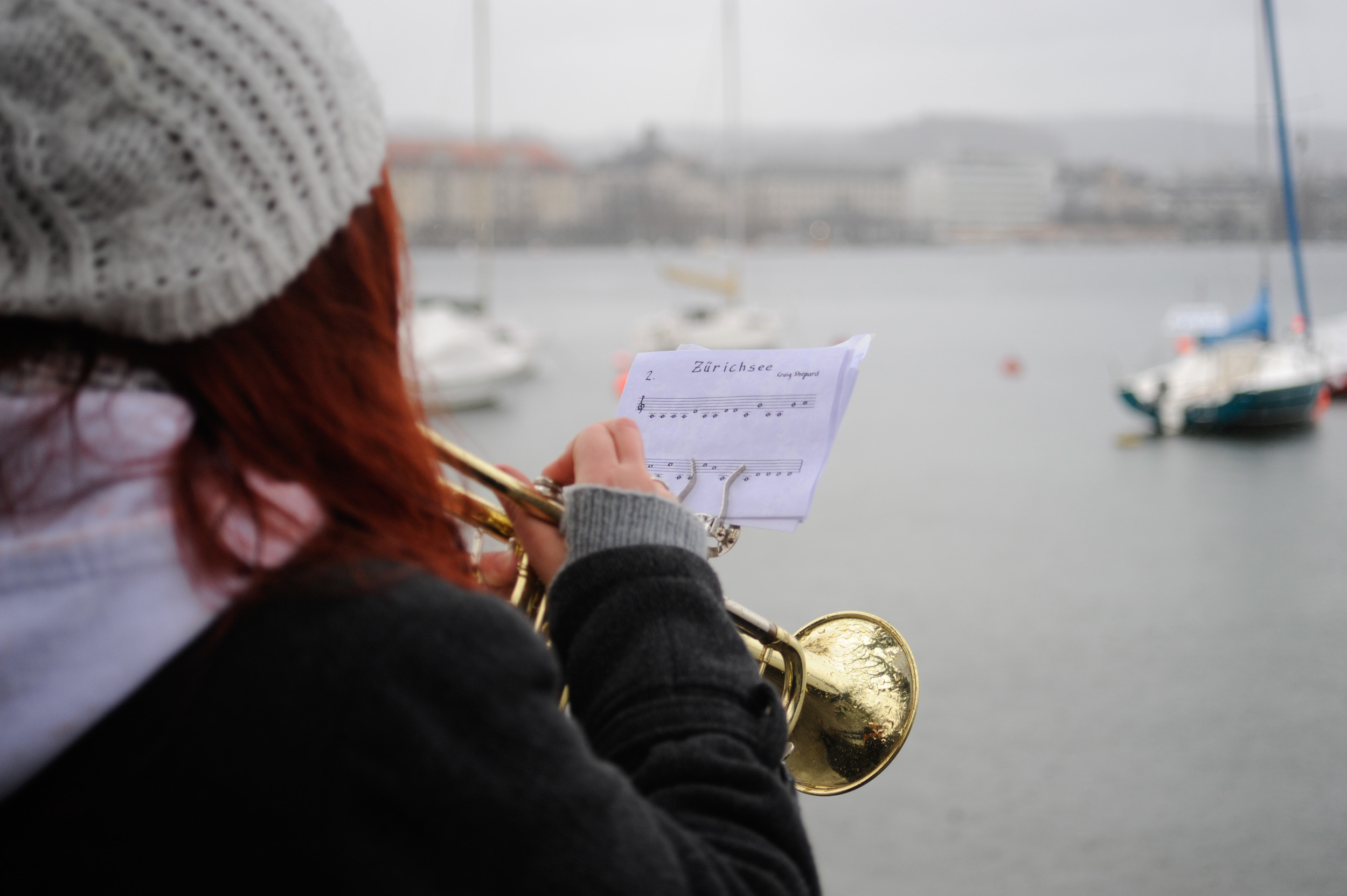
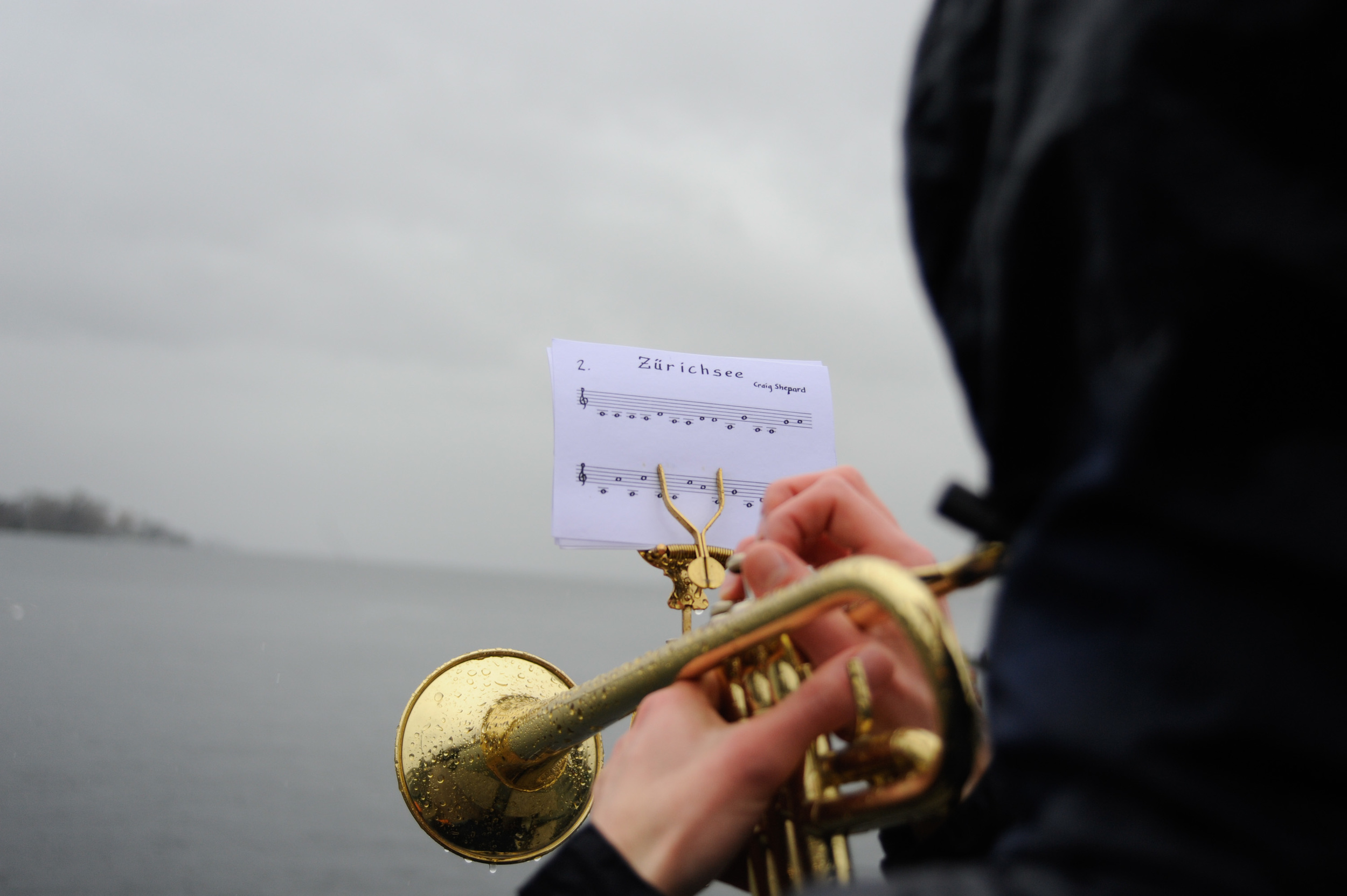
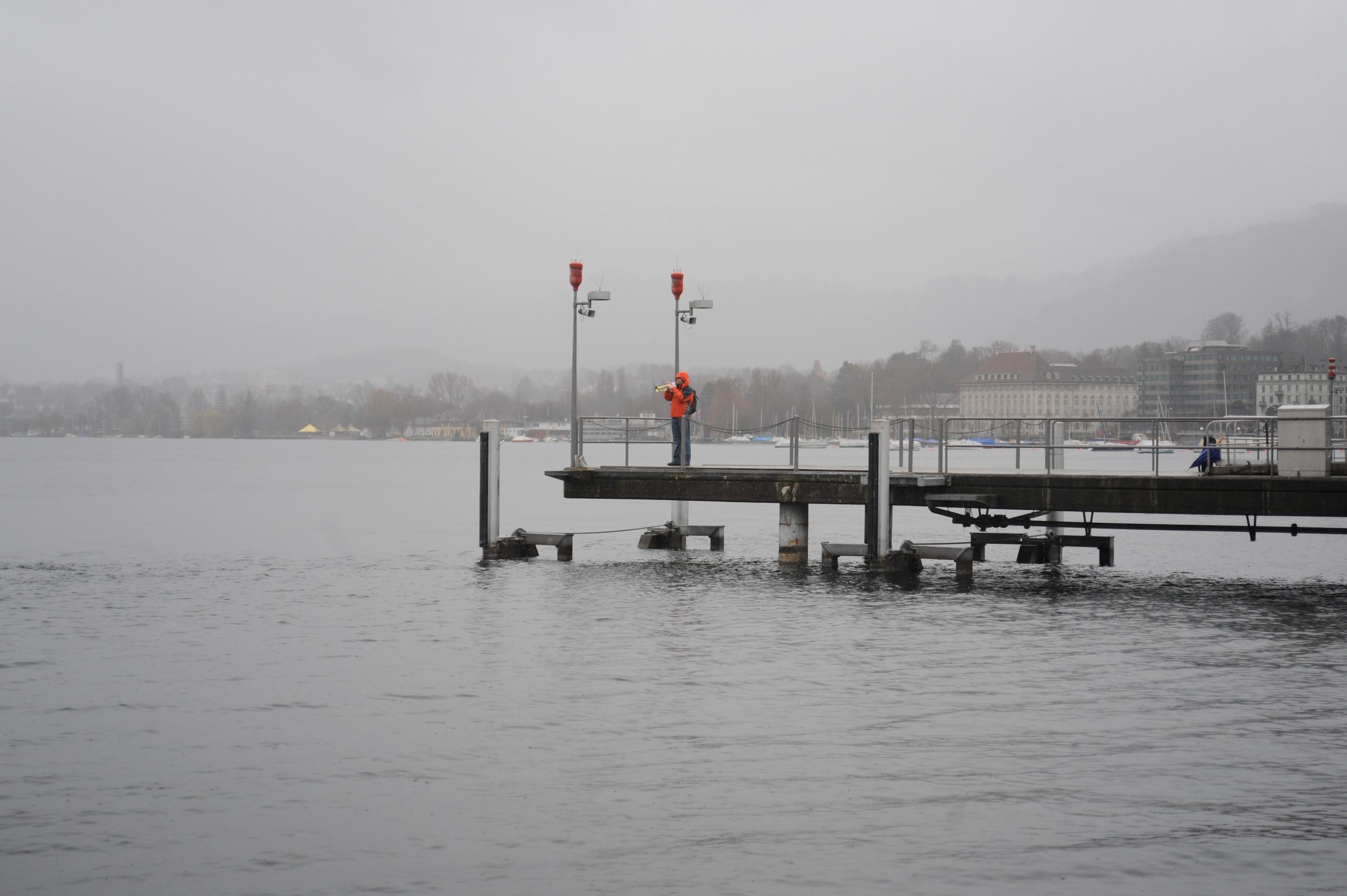
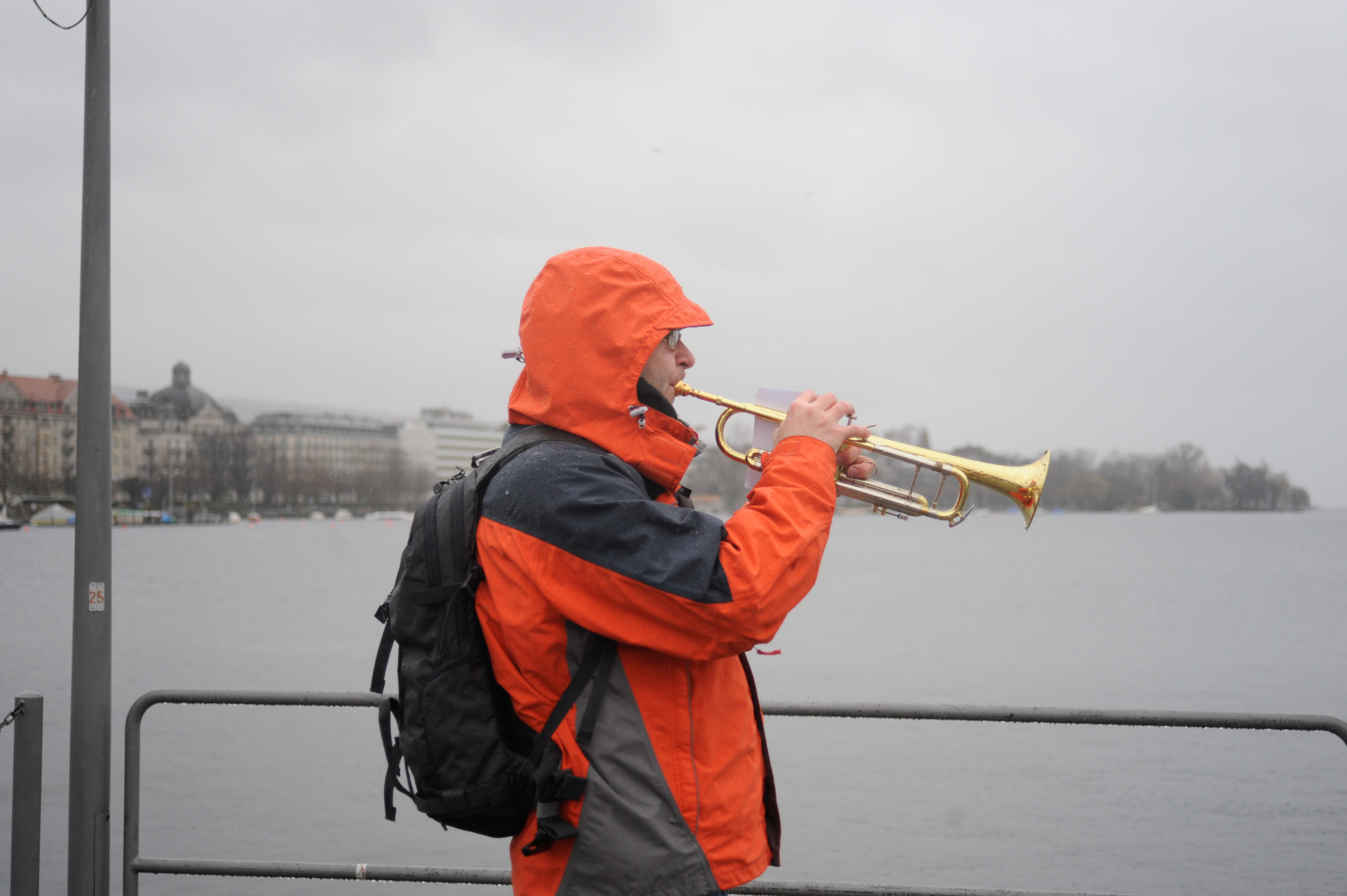
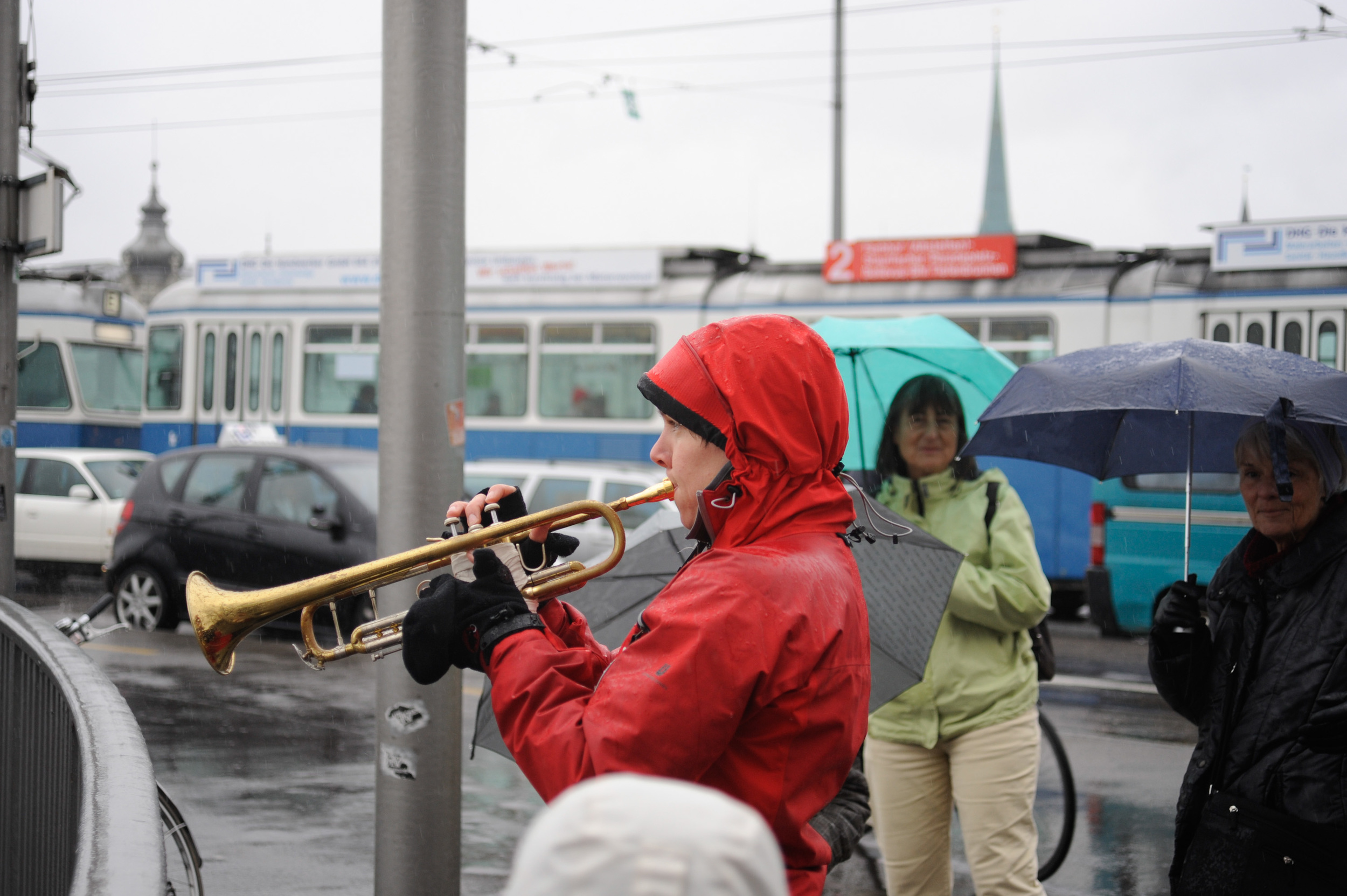

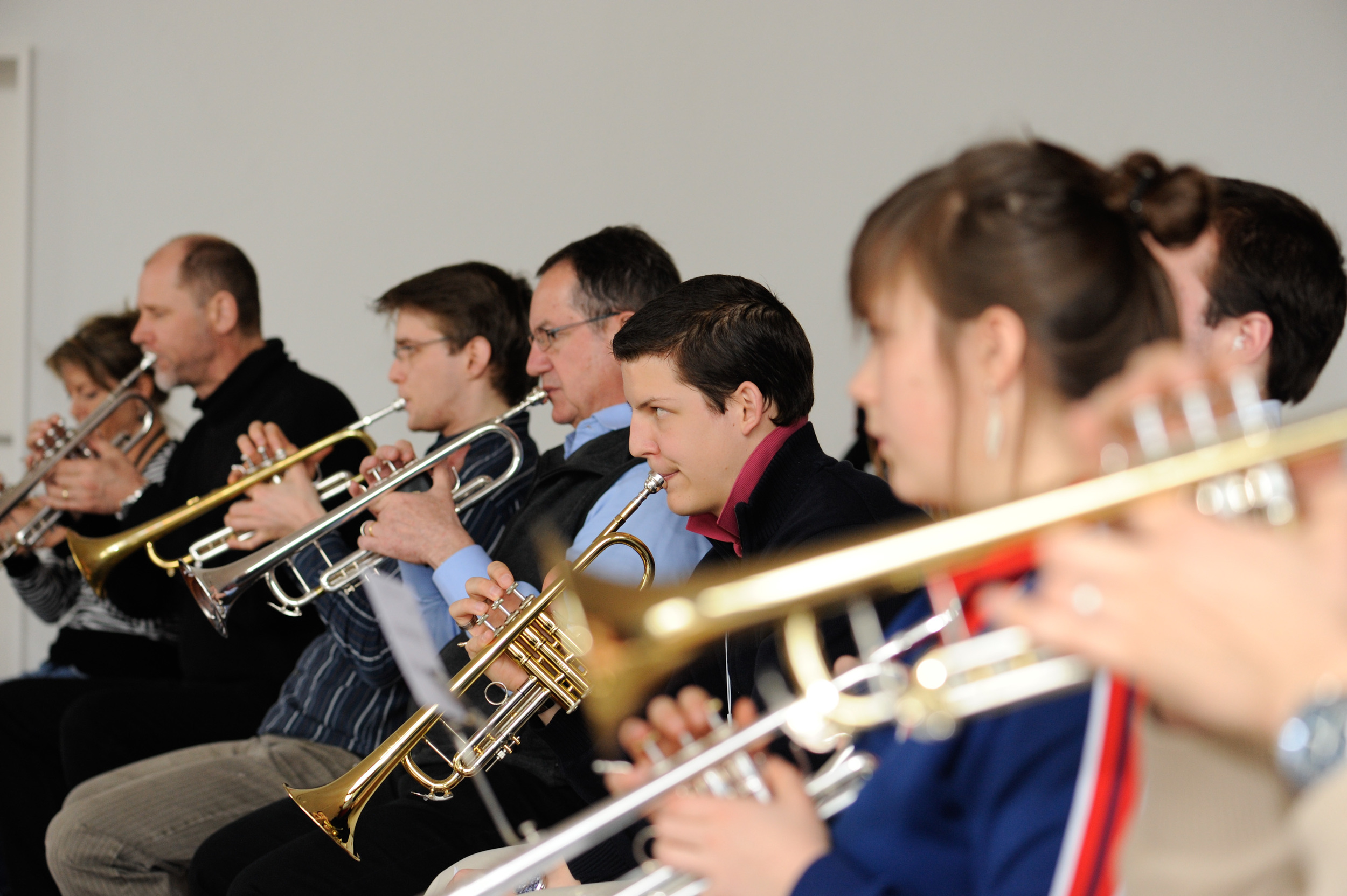
Photos by Beth O'Brien.The second realization took place Saturday, August 31, 2013, 3:00 pm on the banks of the Aare River in Bern, Switzerland. It was curated by Christian Kobi in cooperation with Dampfzentrale Bern and the Musikschule Konservatorium Bern. Performers were: Raphael Anderegg, Toni Augsburger, Lorin Augsburger, Raphael Diggelmann, Lasse Ehrenreich, Katharina Feitknecht, Felix Grandjean, Dany v. Grafenried, Konstatin Gries, Nicola Habegger, John Jecklin, Alois Kaiser, Kajetan Kirchner, Mauritius Klein, Carlo Lanfranchi, Madeleine Mosimann, Samuel Nussbaum, Kay Palma, Ramona Plattner, Joel Richner, Tobias Schneider, Prisca Schorneck, Tobi Stuer, Raphael Weber, Daniel Woodtli, and Sam Würgler.
The first realization took place March 28, 2009 on the shores of Lake Zürich. It was commissioned by the Präsidialdepartement and the Musikpodium der Stadt Zürich. Performers were Robin Bolt, Corrado Bossard, Leyla Ciragan, Carlo Della Chiesa, Jeannette Fabbri, Xenia Heinz, Peter Hubmann, Damian Kato, Rolf Lustenberger, David Meyer, Allan Novak, Samuel Nussbaum, Andy Rüegg, Tobias Schneider, Jacob Streich.
The work is made up of four 15-minute sections, which may flow one into the next. Each section contains a single melody made up of long tones perforated by silence. The melody starts in the low range of the trumpet, blending with the drone of traffic noise common to many cities. Over the course of the hour, the trumpets rise out of this drone.
The Music
Each performer reads from the same part, playing it at his or her own individual tempo. Parallel to these melodies, each trumpet also places loud, short calls throughout the hour.
Photo by Palma Fiacco
First melody from Trumpet City:
© Craig Shepard 2009
The range within which a single trumpet can be heard is about 200 meters, depending on the acoustic properties of the site. The performers are positioned about 50 meters apart, and each player can hear about eight other trumpets-four on each side. This creates an interlocking chain of nine-trumpet "chamber ensembles". In this way, each player is at the same time (1) a soloist, (2) a part of this chamber ensemble, and (3) part of the total sound of the piece.
Any given passerby hears the trumpet closest to him or her, the polyphony of the chamber ensemble as well as the hum of the combined sound. As the pitch level rises, the ensemble becomes louder, and the combined total sound becomes more present. The piece starts when one player at the end of the line begins to play. The next player starts when he can hear the first player.
German
Trumpet City ist eine einstündige Live-Installation mit 18 oder mehr Trompeten und/oder Kornetten. Die Klänge der Trompeten treten in einen Dialog mit der Geräuschskulisse der Umgebung und laden Passanten ein, auf alltägliche Klänge zu hören, die sie sonst oft nicht beachten..
Das Material für die einstündige live-Installation umfasst vier lange Melodien und kurze Trompetensignale. Jede Melodie besteht aus dreissig bis zweiunddreissig langen ruhigen Tönen, die mehr oder weniger innerhalb eines fünfzehnminütigen Segments gespielt werden. Jeder Melodie-Ton erklingt so lang, so weit der Atem des jeweiligen Musikers reicht. Zwischen den Tönen sind Pausen. Zusätzlich zu den Melodien integriert jeder Bläser spontan, wann immer er will, acht kurze, laute Signale in seine Darbietung. Das Stück beginnt einstimmig im tiefen, leisen Klangbereich der Trompete, und schmelzt in die Geräuschkulisse der Umgebung. Im Verlauf des Stücks steigt die Tonhöhe bis zum lautesten Register der Trompete, und die kollektive Präsenz tritt vom Hintergrund in den Vordergrund.
Eine Trompete hat im Freien eine Reichweite von bis zu zweihundert Metern. In Trumpet City sollen die Ausführenden im Abstand von etwa fünfzig Metern von einander positioniert. Jeder ist in gewisser Weise Solist. Da alle aber zugleich zumindest einen ihrer Kollegen hören kann, ist jeder auch Teil eines Ensembles. Das ergibt eigentlich ein Orchester aus Solisten, in dem jeder unabhängig von den anderen spielt und gleichzeitig doch auf die anderen reagiert. Ein Zuhörer, der in der Mitte der Trompetenreihe steht, hört ungefähr acht Bläser gleichzeitig und auch den Gesamtklang der ganzen Gruppe.


